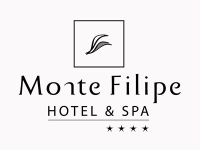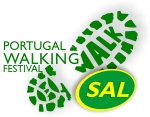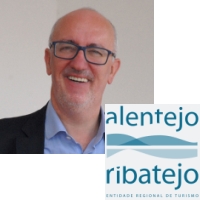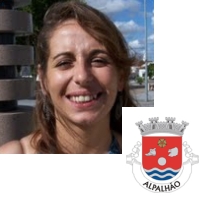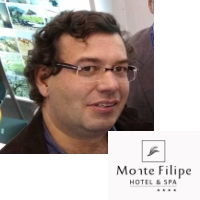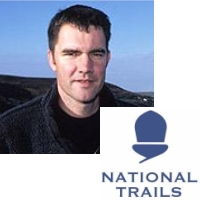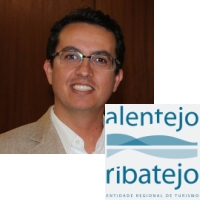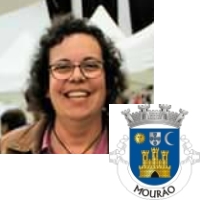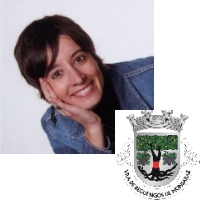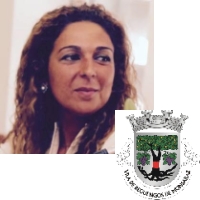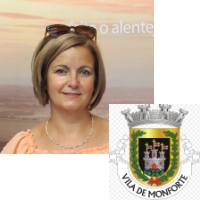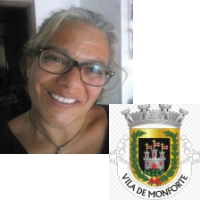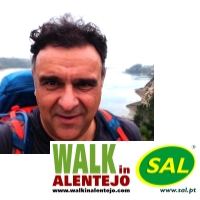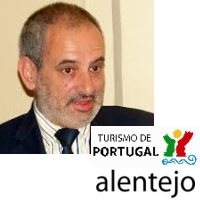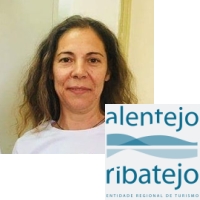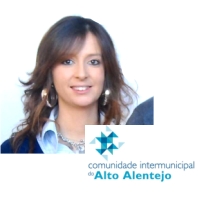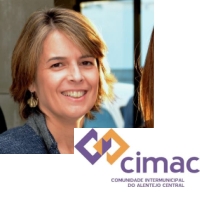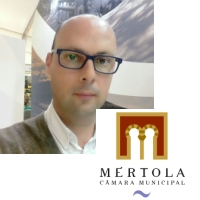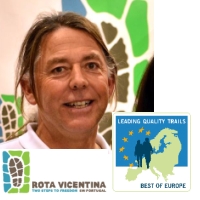Nature
Tourism in Alentejo and Ribatejo Which
is ?
10:00 a.m.
- Opening 10: 30h -
Morning Panel 12: 30H -
Conference by Rui Laginha 14: 30h -
Afternoon Panel
Opening session
-
The public use for Nature Tourism of private rural roads in Alentejo
and Ribatejo Nature Tourism is, as the name implies, a form of recreation practiced in natural areas, be they with conservation statutes or rural, agricultural and forest areas. Walking or hiking and cycling are the most common activities to enjoy these places, and bird watching, insects and flora are becoming more and more popular. In the observation of nature there is also an increasing demand for the activity of photography and video as pure leisure and fun in natural and forest spaces. The territories of Portugal are very diversified in their planning, being the North and the Center of the country characterized by a type of property where the access and the circulation have some facilities. They are often large areas of forest, with access roads, sometimes micro-properties with paths between the borders of each owner and sometimes land of community use, called "vacant", where it is processed without problem to movement. It happens that to the south of Portugal, mainly in the territories of the Alentejo and Ribatejo the situation is different. Historically, these territories were crossed by various means of communication, with a definite beginning in the Roman Empire with the roads that connected cities, mining centers, ports, sanctuaries and the housing and agricultural villas, the predecessors of the Alentejo Mountains. Later, medieval road networks were established that settled on the Roman primitives or created new routes, linking castles, forts, cities and towns, small mines, chapels and hermitages, convents and monasteries and always, but always, isolated dwellings in nuclei of villages or small towns. With the end of religious orders in the mid-nineteenth century followed the public appropriation of property and almost immediately after its sale to private individuals, mostly men linked to the success of liberalism and the new order that reigned in Portugal. The estates were usually huge, on the order of hundreds of acres, with a tendency to grow larger with marriages between the sons and daughters of large landowners. There are, however, two factors that allow for a long time the free movement of people through many of these private lands. On the one hand there is an endless number of dwellings with people living permanently, spread throughout the territory, from isolated houses, small clusters called "Montes", small settlements of diverse origin, villages and even villages. The access of its inhabitants, usually on foot or in animal traction, was made by the shortest or easiest ways, keeping the road network well defined. Also the type of land use, with large fields of dryland cereal, huge spots of cork oak and holm oak and large areas of natural forest and bush, in poorer agricultural areas but important places of animal reserve , often with hunting importance, had free access to those who circulated in the fields. From the beginning of the 80s of the 20th century, the territory of Alentejo and Ribatejo began to undergo various transformations, and the phenomenon of placement of fences and gates in practically the whole territory has grown rapidly. There are many explanations and arguments. Changing the types of crops, many of the lands are cattle pasture in freedom, irrigation equipment needs to be stored, the ancestral paths no longer useful for the construction of modern communication routes, the "Alentejo hills" and even small villages are deserts of people. There is also a gigantic conceptual question regarding rights over territory, a space that for centuries had few powerful owners and a large number of inhabitants without any right to land. The movements of occupation of properties, between 1974 and the mid-80s, left deep marks of prohibitionist will in the access to the territory. More recently, a new and equally complex situation has appeared that is owned by large international groups, often faceless owners and with the continuous connection of properties, which were already very large and now become immense. In all this process there is also a public responsibility, of municipal councils that did not classify their histories of communication, that left to abandon municipal roads for having new roadways, that did not glimpse the importance of such ways for a universal right that can not be alienated: the Right to Landscape. Also the so-called vicinal roads, that is private roads, or that, originally private, later become public domain and connecting nearby settlements, were gradually abandoned from the responsibility of the parish councils for the obvious lack of means of conservation and interest of their responsible for new uses of civil protection, safety and leisure. The new times define that territories of the interior, of low human occupation, with problems of fixation of varied investments and with high levels of preservation and authenticity are privileged destinations for the practice of walking and hiking, bicycle and horse rides, nautical activities and generally nature tourism. This even defines strategically the national, regional and local authorities linked to the structuring of the tourist product and its promotion and sale, but without territory to go there is no development of this tourism. It is important to note that all these tourism practices are perfectly compatible with the maintenance of land ownership, agricultural and forestry practice and the safeguarding of assets there. The crossing of properties has always been done by explorers, scientists, soldiers, hunters, pilgrims, religious and travelers. These passages were even, often, guarantor of supplementary security to the crossed territories. In order for this reality to return and harmoniously placed among all parties, it is necessary to speak, reflect, make decisions and act in a way that guarantees the "Public use for Nature Tourism of private rural roads in Alentejo and Ribatejo." The territory of Alentejo and Ribatejo live a moment of important structure of networks of Pedestrian Paths, with different projects at various levels of development. It was in the Alentejo, in Grândola in the year 1997, that the first Small Pedestrian Route denominated Rota da Serra was implemented, which still operates today. Over the next fifteen years, Signed Pedestrian Path projects were limited to municipal initiatives, with more or less routes, but without a global vision of territory. This work highlights the municipalities of Nisa and Mértola, which managed to have not only a network of routes but also a regular dynamic of promoting walks for residents as well as for hikers coming from abroad. Other municipalities also flagged and edited footpath information, but never managed to gain visibility across their territorial boundaries. Many of these projects have always been understood by the promoters as "anything related to sport" and for this reason this activity was associated with this sector. Walking promotes physical exercise, but a Pedestrian Walk is not just that. It is a tourism product of high potential, which should call the territory a tourist stay that generates wealth in the local economy. The low utilization of these infrastructures has conditioned the abandonment of these, with the vegetation taking care of rails, the signs to disappear and the information leaflets to be exhausted. In many cases immense money was spent on intense artificial signs that were quickly vandalized, stolen, or destroyed by the natural elements. Serious indicator of lack of tourist destination of this resource was the exclusive use of information in Portuguese language. There was no strategic and professional view on Pedestrian Boating Tourism. Southwest Alentejano saw the appearance in 2013 of what is now considered a rare case of good practices for the implementation of a Pedestrian Route Network called "Rota Vicentina". It was an initiative of a private housing association that evolves into an associative structure transverse to the tourism sector and that today is affirmed as territorial tourism manager, always on top of the brand walks. The results of a very active and muscular promotion are visible in the number of hikers as well as in the promotional visibility in the media and tourist operation around the world. Shortly afterwards Alto Alentejo sees the "Alentejo Feel Nature" Trail Network, an initiative of CIMAA Intermunicipal Community of Alto Alentejo, with a somewhat different model, in which structurally there is no conjunctive relationship between the routes, but rather the beginning implementation of high quality resources spread across a wide range of municipalities. This offer was associated with a strong and common image line, dynamically betting on the promotional aspect, editing information in several languages, promoting brand activation and trying to attract new tourist publics to this territory. The results are still difficult to evaluate, with great differences in the use of the various routes of the network. The model for the implementation of this project is based on the municipal initiative, creating differentiated situations from county to county. In the Alqueva territory a pilot experiment called TransAlentejo Alqueva was created, an initiative of the Regional Tourism Entity, where a Pedestrian Track was selected in each of eleven municipalities that are located in the vicinity of the Great Lake and connected water lines. With very limited budget it was possible to infrastruct these routes, with printed guide edition of innovative features. The success of the project has made progress, with work in progress at the moment, the same brand for the rest of the Alentejo, to assert that the selection of these 47 routes, one per municipality, are surely the best choices in the practice of hiking. The Ribatejo has an identical infrastructure for the 11 municipalities of Lezíria do Tejo. Work is under way on the infrastructure of the Caminhos de Santiago and Caminhos de Fátima, in the territory of Alentejo and Ribatejo. The scales of all these works do not minimize the importance of the Municipal Networks of Pedestrian Paths, which now have to gain new breath, making a structuring or renovation, thinking about the local tourist resources. A network of pedestrian routes in which the distances between them are minimized is a determining factor to attract public with several nights of accommodation and consumption of tourism services, as opposed to the fast passers of the great routes. The
second half of this decade marks a turning point in Nature Tourism
and Pedestrian Tours in Alentejo and Ribatejo. |
|
Alpalhão Art and Walking Festival -
Festival de Arte e Caminhadas de Alpalhão
|
| An event PORTUGAL WALKING FESTIVAL |
| alentejo@portugalwalkingfestival.com | Telf +351.265.227.685 |

Portugal
Walking Festival ® is a trademark of
Sistemas de Ar Livre Lda


